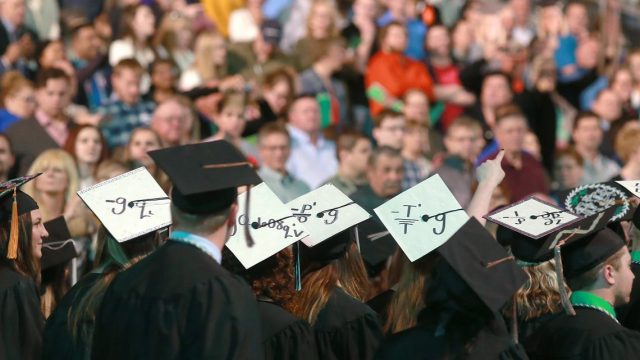The Soaring Cost of Higher Education Is What Forces Students to Choose Between the Humanities and STEM Studies

This letter to the Fargo Forum – headlined “The liberal arts are not useless” – is excellent, though it misses what I think is the most important driving factor behind the trend it describes.
Parents and business leaders and political figures have been putting a heavy emphasis on STEM-centric studies, the acronym standing for science, technology, engineering, and mathematics.
It’s hard to blame them for the preference. Given the soaring costs of higher education, and the heavy burden student loan debt, spending expensive time on campus learning about Shakespeare can seem like an extravagance. The sort of thing only the progeny of one-percenters can afford during a leisurely matriculation.
For many students and their families, who will spend the near equivalent of a lifetime saving for and then paying off the expenses accrued during a relatively short stint at a university, the idea is to get in and get out fast with a degree in a field where jobs are plentiful and earning potential is high.
This is pragmatism, and while perfectly understandable, it has lent itself to an unfortunate attitude about the liberal arts. The study of art, literature, culture, and history are scoffed at as useless endeavors. Not the sort of thing students interested in prosperous careers should spend their time on.
This assumption isn’t exactly true. As the letter writer, John Calvert, points out students who study the humanities are finding success in life too:
Research by the Andrew Melon Foundation says that “all the evidence shows that the bashing of … the liberal arts just isn’t well founded.” Melon’s research shows that while engineers do make higher incomes than liberal arts majors, “more than 60% of the latter are ending up in the top two quintiles of income post graduation, even if they started out in the bottom three quintiles.” Further, A hefty 90% of liberal arts grads say they enjoy their jobs. Their employers value them for having a broader world view and being able to communicate better than those with more specialized majors.
A career based on a liberal arts education can be just as rewarding as one in the STEM fields.
But let’s stop talking about this issue as though the liberal arts and the STEM fields are mutually exclusive pursuits. They shouldn’t be.
The engineers building the bridges of our future should also have, in their education portfolio, a bridge to the past. How much more creative might our artists be if they are exposed more rigorously to the wonders of science and mathematics?
And might we all not be better citizens if we had a better understanding of history? This, from Calvert’s letter, is chilling for a self-governing society such as ours: “The NAEP finds that only 13% of high school seniors are proficient in U.S. history; and it’s not much better in other basic subjects.”
What I am advocating for is a more well-rounded education for our students, one focused not just on making them successful in their careers but successful as citizens of our society as well.
Sadly, though Calvert doesn’t mention it, the realities of financing a diploma make specialization a necessity.
This chart, though a few years out of date now, portrays a trend line which explains why parents and students and policymakers are focusing on STEM studies and pushing the liberal arts courses to the margins:
The cost of higher education has grown, over the decades, at a rate which roughly doubles the cost of medical care.
Is it any wonder so many in the public view a liberal arts education as a luxury? The students and families shouldering this heavy burden have begun to prefer specialized curriculum focused on maximizing career earnings. That, in today’s economy, has meant a focus on the STEM fields.
If we want to reverse that trend, we have got to make higher education more affordable. And not with more government subsidies for student loans. We have tried those sort of policies, and costs have soared anyway.
Higher education needs a new business model, one that’s car more cost effective than the one currently deployed.





